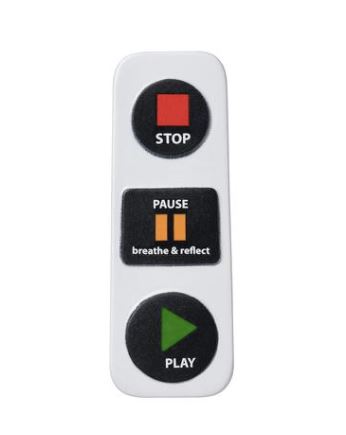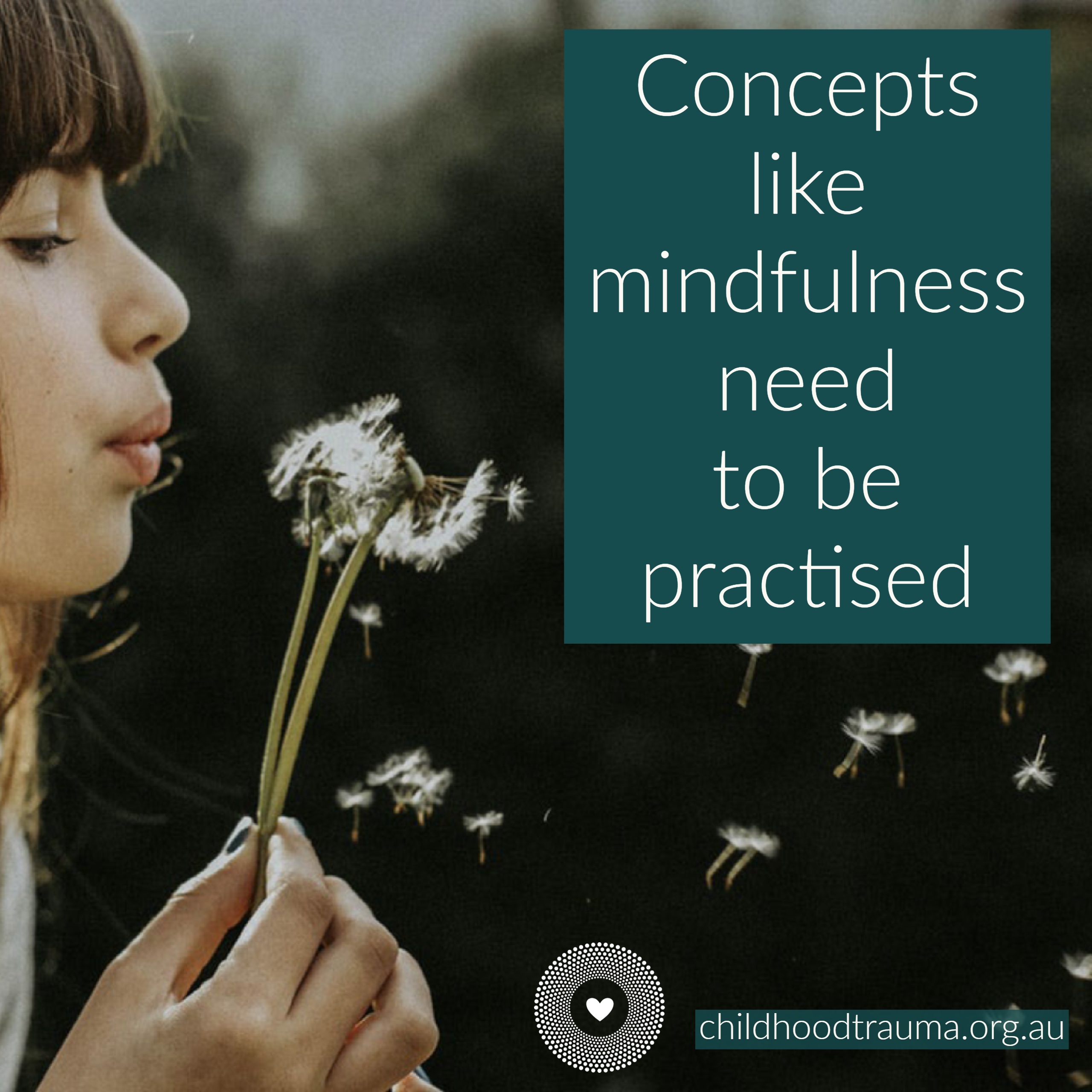
Technique vs Practice
This blog entry was authored by Hanif Reza Jaberipour, Senior Training Consultant
Parenting and Early Years Program the Australian Childhood Foundation
The Bringing Up Great Kids (BUGK) parenting program offers parents several mindfulness practices.
The most popular of these is the Stop Pause Play practice that provides parents with a metaphorical pause to bring the mind and body into the same place at the same time so that they can then mindfully respond to the  situation rather than react. Mindful breathing, walking, eating, drinking, and listening are among other mindfulness practices suggested by BUGK. All these practices are built on things we unconsciously do everysecond in normal life. When we spend a few minutes in consciously doing those same things, we are in fact doing a mindful practice. Listening to another in a mindful way, eating a sultana while being aware of its shape, size, and taste, drinking a glass of water and feeling how it cools the mouth space and goes down to the stomach, are examples of simple mindful practices that can be done at any time of the day.
situation rather than react. Mindful breathing, walking, eating, drinking, and listening are among other mindfulness practices suggested by BUGK. All these practices are built on things we unconsciously do everysecond in normal life. When we spend a few minutes in consciously doing those same things, we are in fact doing a mindful practice. Listening to another in a mindful way, eating a sultana while being aware of its shape, size, and taste, drinking a glass of water and feeling how it cools the mouth space and goes down to the stomach, are examples of simple mindful practices that can be done at any time of the day.
We are commonly asked just how effective mindful practices can be in those moments when they are most needed. Highly emotional moments between adults and children are precisely the moments when parents/educators need to be mindful and to prevent ‘flipping their lid’. An educator cannot stand in the middle of a room with a number of toddlers and be mindful by taking five breaths! Parents cannot help themselves by mindfully drinking a glass of water while a bowl of milk and cornflakes is spilt on the table by ‘somebody’! It is almost impossible to calm down through breathing when two siblings are crying and screaming, each of them pointing his innocent finger towards the other. BUGK participants often wonder if mindful practices are applicable as an effective technique in parenting at all.
The answer to this question lies in distinguishing ‘practice’ from ‘technique’. Techniques operate like keys: when a door is locked you just need to find the right key to open it. Once the right key is identified, the door will always be unlocked using the same key. To use the key you don’t need to practise. Everybody who has the key can open the door. In the same way anybody can use techniques to accomplish jobs.
While techniques are meant to work for anybody who has learnt them, regardless
 of who they are, with concepts like mindfulness, ‘being’ matters. It is not enough to know about mindful activities or even to learn mindfulness practices. It is not even helpful to try them a couple of times to make sure that we have them inmind. Let’s remind ourselves that athletes do not leave their exercises for the Olympics. Concepts like mindfulness need to be practised. It is good practice that makes perfect. By practising repeatedly, we master them overtime. Practice ‘enables’ us and embeds the ability as part of our being. By going through the practice, the practitioner is mindful rather than trying/struggling to be mindful. When mindfulness practices are part of a person’s daily life, the educator or parent can find themselves being more mindful when they need it. They discover that compared with the past, they are better able to think before they act. They find themselves better able to manage big feelings and see beyond behaviours.
of who they are, with concepts like mindfulness, ‘being’ matters. It is not enough to know about mindful activities or even to learn mindfulness practices. It is not even helpful to try them a couple of times to make sure that we have them inmind. Let’s remind ourselves that athletes do not leave their exercises for the Olympics. Concepts like mindfulness need to be practised. It is good practice that makes perfect. By practising repeatedly, we master them overtime. Practice ‘enables’ us and embeds the ability as part of our being. By going through the practice, the practitioner is mindful rather than trying/struggling to be mindful. When mindfulness practices are part of a person’s daily life, the educator or parent can find themselves being more mindful when they need it. They discover that compared with the past, they are better able to think before they act. They find themselves better able to manage big feelings and see beyond behaviours.
To clarify, the mindful educator does not need to do ten breaths in the middle of a chaotic toddlers’ room, and the parent does not need to do the mindful drinking activity to keep being mindful when siblings are screaming. They just find themselves acting more and more mindfully. Athletes don’t try to remember things during games they just act and let their abilities flourish. Mindfulness activities are lifelong capacity building practices. This is a progression that never ends.
